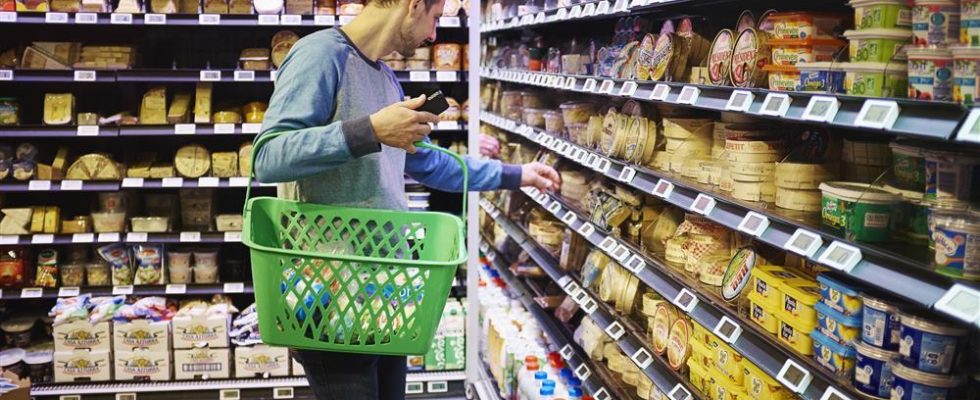With food price increases of 15.8% over one year in March, according to INSEE data, the price of the “shopping basket” franceinfo/France Blue* logically increased again last month: up by one euro compared to February, this basket rose to €106.26 on average in France in March, which represents inflation of 17.7% over one year!
Large retailers had made no secret that the household bill would increase further when they went to checkout, the annual negotiations with manufacturers, completed at the end of February, having resulted in new price increases of 10% on average.
A new fact, and a direct consequence of these negotiations: it was the big brands, and in particular their flagship products (Coca-Cola, Nutella, Vico chips, Lay’s…, quotes franceinfo) that increased the most in March, while so far, the “first price” products and those of distributors recorded the sharpest price increases.
Coca-Cola inflation
According to the NielsenIQ institute, which carries out the price readings of the “shopping basket”, this phenomenon is unprecedented. “Iconic” brands like Coca-Cola, for example, are normally loss leaders, whose prices are well known to consumers, and are therefore ” historically rather deflationary notes NielsenIQ.
Over one year, and driven by an acceleration of almost three points since the start of the year, the rise in prices for national brands thus reached 12.25%, whereas it was still limited to around 9% in November.
Soaring “first prices” over one year
At the same time, with +0.43 point between February and March, against +1.58 point between January and February, that observed for entry-level products slowed down a little.
The annual inflation on the “first prices” is nonetheless the most important, by far, at +19.37%, against +16.39% for private labels, or even +11.13% for the organic. And there is little doubt that “first price” products will pass the 20% annual inflation mark by next summer.
summer peak
Faced with this trend, the contraction in consumption, observed since the end of 2022, is logically continuing: for the month of February, consumer spending fell by 0.8% in volume over one month, notes INSEE. . This decrease can be seen in all product categories, but it is particularly strong in food: -1.2% compared to January.
All forecasts point to a continued rise in food prices, at least until the summer. Logical then that the large distribution should gradually pass on the increases of the producers and industrialists throughout the 2nd quarter.
” In the coming months, food inflation is expected to remain the biggest contributor to consumer price inflation in Franceanticipates Charlotte de Montpellier, Senior Economist at ING. Assuming that energy prices remain lower than in 2022, headline inflation should average 5% in 2023 (5.9% for the harmonized index), with a marked decrease from the end of summer. »
*Established by the NielsenIQ institute from 37 everyday products in supermarkets. The selection includes non-food, hygiene products (shower gel, shampoo, toilet paper, toothpaste, detergent, washing-up liquid).
